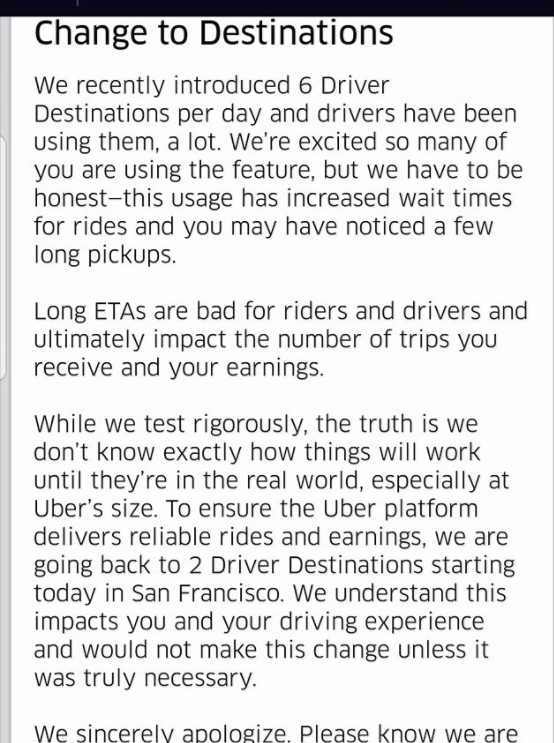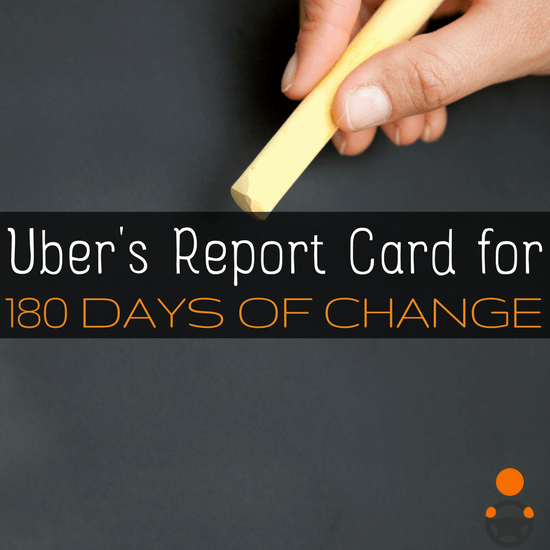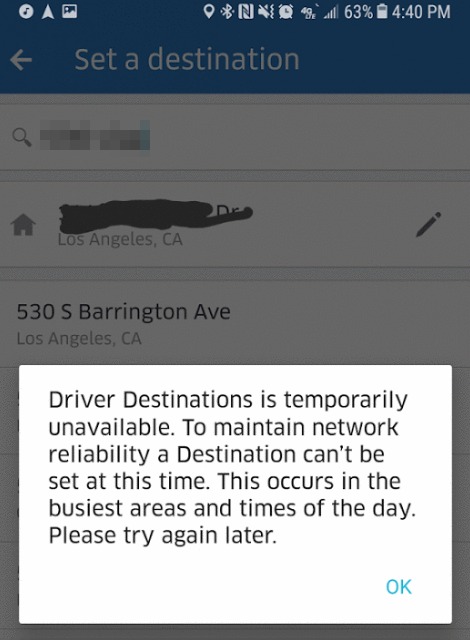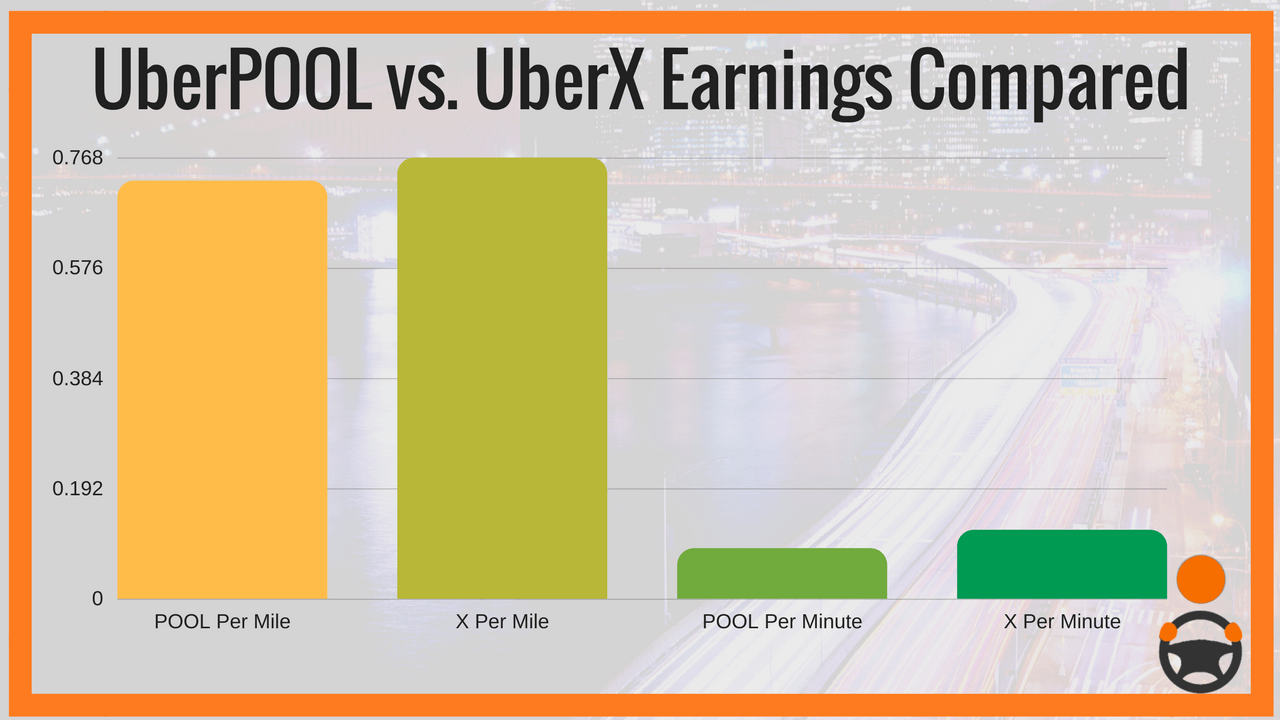Wow, has it really been six months since Uber launched the tipping option? In June of 2017, Uber made a huge splash with their big announcement that tipping was coming to the Uber app as part of their 180 Days of Change.
And while 2017 has been a bad terrible PR year for Uber, if you weren’t following the news, you probably wouldn’t have noticed one bit since the service is still reliable and Uber is actually doing more rides and revenue than ever these days. But there’s no doubt that all of Uber’s bad press caused a significant shift in the way they think about their relationship with drivers. The result is the 180 Days of Change – a campaign by Uber to ‘meaningfully improve’ the driver experience.
Whether you think the changes are meaningful or not, it should be obvious that a lot of work went into the program on Uber’s end, from listening to drivers and figuring out what needed to be fixed, to actually implementing it. But how noticeable were all the changes to the actual driver experience? Let’s take a look and see.
Tipping was the Big One (Chapter 1)
Grade: A-
I’ll be honest. I didn’t think Uber was ever going to add a tipping option as long as Travis Kalanick was in charge and it’s telling that Kalanick resigned the same week that the tipping option went live. While I give Uber a lot of credit for adding the tipping option, the results so far have been disappointing.
As we found out in our tipping experiment, Uber basically hides the tipping option and most passengers have no idea how to tip. And when you combine that with an ingrained culture of no tipping on Uber, that amounts to very few tips for drivers.
But there’s a ton of room for improvement here, and it seems like we’re getting more reports from drivers that the number of tips is increasing on Uber. Even though the 180 Days of Change has come to an end, Uber has told us that they will continue to build on these changes and continue adding new features.
For now, I give Uber an A- for Chapter 1, but if they don’t do more to encourage passengers to tip, this will drop down a letter grade.
Read the full Chapter 1 announcement and all the other features that were added here: Uber to Add a Tipping Option and Other Big Changes to Driver Earnings
24 Hour Phone Support (Chapter 2)
Grade: B
Contacting Uber has been a challenge for drivers since the get go, and once you actually get a hold of someone, well that’s another story. Customer support is hard though (and expensive), and like many other tech companies, Uber tried to get by without a phone line for years.
Related: The Most Popular Rideshare Questions – Answered
Now that phone support is here, it’s been nice having someone I can call and talk to whenever there’s a problem. Unfortunately, Uber’s customer support leaves a lot to be desired and personally, I haven’t noticed much of an improvement in the quality of actual support.
I gave Uber a B grade for Chapter 2 since they did the right thing by adding a phone line for drivers. Although I haven’t noticed much of an impact from ratings protection and the $15 lost item return fee, I like the spirit of these changes since it recognizes that drivers are often getting blamed for things out of their control or doing extra work without compensation.
Read the full Chapter 2 announcement and all the other features that were added here: Uber Offers 24 Hour Phone Support, Ratings Protection and More
6 Destination Filters, Arrival Times and Long Trip Notifications (Chapter 3)
Grade: C+
I always knew driver destinations were a favorite feature for drivers, but I didn’t realize how popular it was until Uber increased the number of daily filters from 2 to 6 for all drivers across the country and apparently we broke the system 🙂

During the 6 DF glory days, I didn’t notice increased ETAs for my pick-up requests, and I don’t think I got a single e-mail from drivers complaining about this. We did get a lot of great feedback, though, on the increased DFs though and I still don’t understand why drivers couldn’t keep 3 or 4 DFs.
Uber has even taken this reversal one step further and is testing a limitation on the 2 DFs during busy times as I experienced recently.
It wouldn’t make much sense for Uber to give us 6 destination filters and then take them away, so I bet riders probably were seeing increased wait times. But that should have been a signal to Uber that drivers are using these DFs for a reason. They want and like having the ability to get rides headed in certain directions or avoid situations where they’re getting a ride to nowhere.
If Uber could have made this work with 3 or 4 DFs I would have given them a solid A or A-, but since they reverted back down to 2, there wasn’t a lot of meat in this chapter. Long trip notifications and arrival times are nice but they’re not super meaningful, so I gave Uber a C+ on this chapter.
Read the full Chapter 3 announcement and all the other features that were added here: Uber is Launching Two New Features.
More Money for UberPOOL Pick-ups (Chapter 4)
Grade: C
Uber has been trying to force UberPOOL down drivers (and passengers) throats for a couple years now but it just hasn’t stuck. 75% of drivers in Los Angeles that we surveyed said they were dissatisfied with their UberPOOL experience and adding a dollar to the second pick-up really hasn’t made much of a difference, especially when you consider drivers are still paid a lower rate card for UberPOOL compared to UberX.
But the reason why Uber is so stubborn when it comes to UberPOOL is because it’s one of the only ways they have of reducing fares for passengers without having to subsidize rides or take less from drivers. This change on UberPOOL really hasn’t made much of a difference for drivers, and I think we got more feedback on Lyft’s Lyft Line change where they went back to paying normal Lyft rates on Lyft Line rides.
Uber made a series of smaller changes to POOL too in this chapter but they’re probably going to have to do a lot more. I gave Uber a C for this chapter since drivers need to be paid more for UberPOOL, short and simple.
Read the full Chapter 4 announcement and all the other features that were added here: Uber is Launching Two New Features.
Increased Earnings on Long Pick-ups and Wait Time (Chapter 5)
Grade: B-
None of the changes made in Chapter 5 have had a huge impact on drivers, but they go along with the theme of rewarding drivers for their effort. In the past, riders have always gotten a great deal with drivers going out of their way for long pickups (with no extra compensation), and changes in this chapter aim to fix that.
It’s hard to say these changes are bad, but I feel like they’re not super meaningful either. It’s almost as if Uber was starting to run out of big things to fix or maybe even getting a little burnt out at this point, so they found a few small pain points and fixed them.
I gave Uber a B- grade since even though these changes benefit drivers, I don’t think they’ll have much of an impact on their own.
Read the full Chapter 5 announcement and all the other features that were added here: Uber Increasing Rates on Long Pickups and Wait Time.
Improving Pick-ups and Ratings (Chapter 6)
Grade: C+
I gave Uber a C+ for this chapter since it was clear that they were really stretching things here. Live rider location is cool, but Lyft has been doing this for a while now.
Getting a ‘heads-up’ for a scheduled ride does nothing for me as a driver. Uber says these rides tend to be longer but doesn’t give you any other info on the actual rides, and it could still be a minimum fare. I much prefer Lyft’s system since they are actual scheduled rides.
There were a whole host of changes made to the ratings system, but you still have no idea why your rating is going down or what you can do to improve your score, which seems like the biggest fix that needs to happen.
Read the full Chapter 6 announcement on improving the pickup experience here, and the improved ratings and feedback here.
My Report Card for Uber’s 180 Days of Change
Chapter 1 (Tipping) – Grade: A-
Chapter 2 (24 Hour Phone Line) – Grade: B
Chapter 3 (6 DFs, Arrival Times) – Grade: C+
Chapter 4 (More $ on UberPOOL) – Grade: C
Chapter 5 (Long Pick-ups and Wait Time) – Grade: B-
Chapter 6 (Pick-ups and Ratings) – Grade: C+
Overall Grade: B-
On a 4.0 scale: (3.7+3+2.3+2+2.7+2.3)/6 = 2.67 (B-)
Six Recommendations For Uber
#1: Increase the Rates
The big thing missing from the 180 Days of Change campaign is a rate increase for drivers. But if Uber were to increase rates, the money could only come from two places. Uber could pay drivers more out of their own pocket or they could charge passengers more. Uber is already paying out lots of weekly bonuses to drivers though and charging riders more would cut into the growth numbers they love showing investors.
I don’t see Uber raising the rates anytime soon but I’ve been wrong before (see tipping). More than anything though, the per mile rates are typically the strongest indicator of how drivers feel about pay. Drivers want higher rates, but what they really want is higher earnings. If Uber can shift this narrative, all the improvements to the driver experience that increase pay will start to be more meaningful.
Also, one negative change that went under the radar during the 180 Days of Change campaign was the announcement from Uber that they were increasing their booking fee, which means they now take a higher cut of each fare. So I guess they are okay with charging passengers more, as long as they realize 100% of the increase.
Related: Understanding Uber’s Commissions
#2: Encourage Passengers to Tip Way More!
I think Uber’s going to have to raise rates eventually, but until they realize that, tipping seems like a big opportunity to get drivers more money on each fare, since I suspect it will have less of an impact on demand.
Most consumers look at the upfront price when making a buying decision and that’s why so many industries have additional service/resort/etc fees. There’s still a LOT Uber can do to get drivers tipped more frequently.
Related: Is Uber Stealing Tips?
#3: Continue Rewarding Drivers for Effort
A lot of the smaller changes Uber made throughout the campaign rewarded drivers more for effort. While they aren’t anything to write home about, over time they should create a more equitable experience for all. Uber has a lot of work to do here, but it seems like they finally have a team willing to start making these changes and continuously improve.
#4: Total Revamp of the Ratings System
Although Uber made some changes to the ratings system, I think they need to start from scratch. Right now, you have a bunch of drivers who dislike the rating system, but Uber only ends up deactivating a very small percentage of drivers so all those worries are unfounded.
#5: Give up on UberPOOL Pay Drivers WAY More for UberPOOL
It would be great if Uber would just give drivers the option to opt out of UberPOOL. Right now, UberPOOL is being propped up by the Quest bonuses since each rider counts as multiple trips, it actually makes UberPOOL worthwhile. However, the key here is that it’s because drivers are getting paid more to do so.
I don’t think there are any cool tricks to play here, Uber just needs to pay drivers more if they want them to do UberPOOL.
#6: Figure Out How to Value Top Drivers
A lot of the changes Uber made with this campaign will have a positive impact on the driver experience but the thing missing is an ecosystem that values top drivers. We’ve documented numerous examples across customer service, ratings, earnings and more where it just doesn’t matter whether you have 15,000 rides and a 5 star rating under your belt or it’s your first ride – you’re treated the same. A driver with 15,000 rides under his belt and years of experience should always be given the benefit of the doubt, and right now that just isn’t happening.
This is the big thing I think Uber tends to miss. When you’ve got millions of drivers on the platform, it’s easy to think about drivers like numbers on a spreadsheet, but drivers are surprisingly dedicated to their craft. It’s hard to quantify the feeling of disdain you have when Uber e-mails you to tell you you’re temporarily deactivated over something a drunk rider said about you.
Related: It’s Hard to Trust Uber and Lyft With Emails Like This
If you’d like to grade Uber on their 180 Days of Change, feel free to take this template below, give each chapter a grade and give Uber an overall grade for their efforts. Copy and paste your grades so we can compare them below.
Chapter 1 (Tipping) – Grade:
Chapter 2 (24 Hour Phone Line) – Grade:
Chapter 3 (6 DFs, Arrival Times) – Grade:
Chapter 4 (More $ on UberPOOL) – Grade:
Chapter 5 (Long Pick-ups and Wait Time) – Grade:
Chapter 6 (Pick-ups and Ratings) – Grade:
Overall Grade:
Drivers, what do you think of this analysis of Uber’s 180 Days of Change? What grade would you give them?
-Harry @ RSG







